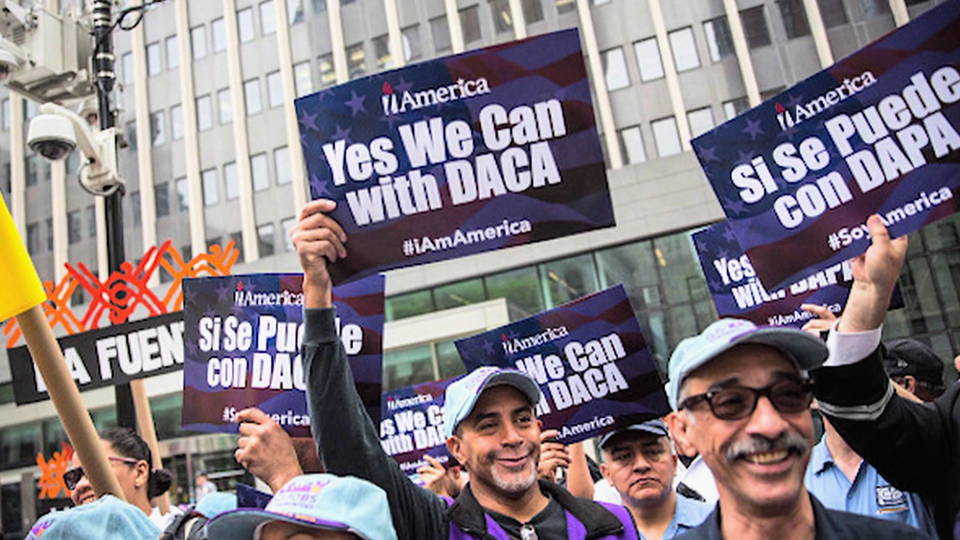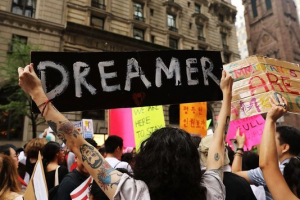1. What are the reasons for the Executive Action announced by the President on November 20th?
President George W. Bush gave a national TV address in May, 2006 to address the immigration problem in the U.S. and the need to reform the immigration system. He said that the vast majority of illegal immigrants were decent people who worked hard, supported their families, practiced their faith, and led responsible lives. They were a part of American life but they were beyond the reach and protection of American law.
The situation had not changed in 8 years and recognizing that when he took office, President Obama vowed to enact changes. For 6 years, he tried to do so through legislation. In June, the Senate passed a bill with a resounding 68 to 32 vote, giving many people real hope that the House of Representatives would follow suit, and that the comprehensive immigration reform that President Obama had vowed to make a reality, would come to fruition.
14 months later, nothing had happened. The House had not moved on this and it was left to rot. President Obama decided to do what he and many U.S. presidents have done over the course of U.S. history: Declare an Executive Action to move forward his mandate as much as possible. Unfortunately, there are certain much-needed changes in immigration laws that will not happen and so this Executive Action will not fix what is broken, it will be only a band-aid.
Inevitably, the Presidential election of 2016 will determine what happens with the future of immigrants in the U.S. I hope that President Obama’s message rings loud and clear: “We were strangers once too” – Except for the small percentage of Americans who are Native American, we are all immigrants or descendants of immigrants and we should empathize with and embrace those who also share the same dream, ethics and morals and want to make this country stronger and greater.
2. Does this Executive Action build on the previous Executive Actions on Immigration?
Yes. It expands on two existing reforms created by Executive Action:
- Deferred Action for Childhood Arrivals (DACA)
- Provisional Waivers of Unlawful Presence
It also adds some other proposed measures:
a. DACA was extended to ALL people who came to the U.S. under the age of 16 and who arrived before January 1, 2010. Unfortunately the age was not extended to 18, which would have been logical, since 18 is the legal age of majority in the U.S. This means all those who came here between the age of 16 and 18 are not eligible, even if they have lived here for more than 5 years.
b. A waiver is in effect a legal pardon for an immigration infraction, in this case an illegal overstay and/or entry without inspection (Illegal entry without documents). Currently, only spouses and minor children of U.S. citizens are allowed to apply to obtain a provisional waiver, if a visa is available.
This Executive Action will expand the reach of this waiver to spouses, sons or daughters of lawful permanent residents and sons and daughters of U.S. citizens to get a waiver. Before this existed people would have to leave the country with the hope of getting the waiver approved at the US Embassy in their native country, which was a very risky proposition.
c. DAPA – will allow adults who have been in the U.S. since before 2010 and have children born in the U.S., to apply for Deferred Action and Employment Authorization.
d. What is labeled “Modernization, improvement and clarification of immigrant and nonimmigrant programs to grow our economy and create jobs” – Supposed to be used for U.S. businesses, foreign investors, researchers, inventors and skilled foreign workers. – This is still pretty vague for now.
e. Naturalization – Push to make the process more accessible and clear
3. Which of the reforms will have the most impact?
Most definitely DAPA – deferred action for parents – Simply put this will potentially benefit over 4 million people, because it covers all people who have been continuously in the US for more than 5 years and who have had children born at any time up to November 20, 2014. That is because all children born in the U.S. become U.S. citizens and under the law as it stands right now, US born children cannot sponsor their parents for legal permanent residence until they turn 21. This has created many families with two extremes in the same household; USC children and parents who are undocumented and have no status. The idea is to keep these families together.
The impact will be felt in the economy, as many of those eligible for DAPA are currently working illegally, without valid employment authorization. This will create a situation where they will apply individually and if approved, they will be given employment authorization. Employers will have to choose between putting them on the payroll, which means paying them minimum wage plus whatever benefits are required by law, or letting them go. Employers who exploit as part of their business model, will end up employing newly arrived, undocumented foreigners or those who don’t qualify for this or any other new remedy.
It’s important to note that anyone with a criminal record will probably not qualify for any of these measures. Since the President’s priority under what is called Prosecutorial Discretion is to continue to deport all criminals, this will not change. Anyone who has a criminal record will want to assess whether it’s worth even applying.
4. What are the greatest weaknesses of the Executive Action?
a. There is no clear path to citizenship, or legal residence and there is not even granting of any real conditional residence. People will be allowed to work legally and be protected from deportation, but they will not be given a visa status of any kind, which means no clear path to legal permanent residence and also no ability to travel and leave the country. In essence they will be allowed to remain trapped here, as they already are. If they leave because there is no mechanism for advanced parole created, then they will be barred from reentry for 10 years. There is no mention of advanced parole in the information provided to date, so right now this is simply a way for them to work legally but get no other benefits. It is a step out of the shadows but not necessarily a step forward.
b. The much-needed changes, like the elimination of annual caps for visa categories like H-1B or EB-5, are not within the purview of an Executive Action. Therefore, it is not possible to address the true fundamental changes/overhauls that are needed in the system and will not be fixed until Congress steps in and does something about it.
5. What does the future hold for the immigration system?
It all depends on Congress coming together, making a bill into a law and putting it into action. Until then, we can only apply these band-aids to the situation that don’t solve the cracked foundation this country is built on. If Republicans care enough about the Latino vote, they will be forced to move immigration reform forward in Congress or risk another Democratic president at the helm.
You can follow this links:http://smalawyers.com/5-questions-on-immigration-reform/ `









